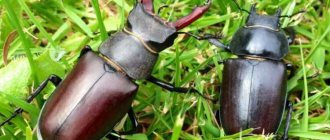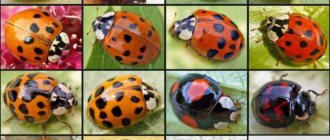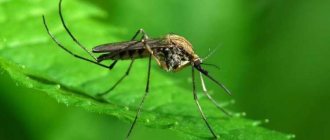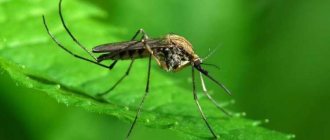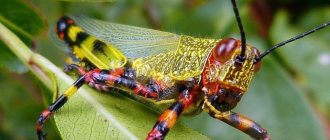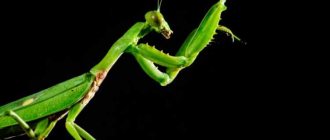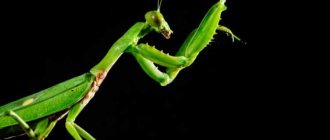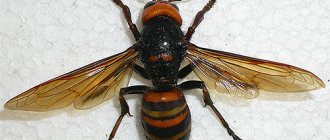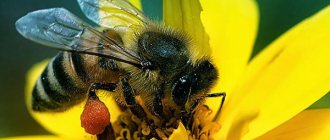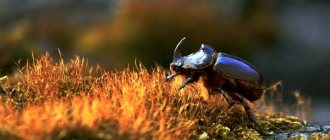Review author: “ZooVita”
The stag beetle, a giant from the order of Coleoptera and the family of stag beetles, is a protected species listed in the Red Books of many countries. He was also given the name deer because of the huge protruding jaws of the males, similar to the antlers of a deer.
With these weapons, similar to the claws of crayfish and crabs, he can bite. It not only acts as a distinctive sexual characteristic, but also as evidence of strength, vitality and a guarantee of the survivability of subsequent generations.
Origin of the species and description
Photo: Horn beetle
Horned beetles belong to the order Coleoptera, the family of stag beetles. The name of their genus in Latin sounds like Lucanus. These insects are famous for their unusual appearance and large dimensions. In nature, there were individuals whose length reached ninety millimeters! Stag beetles are also called stag beetles. This is due to their large growths located on the head. Outwardly, they resemble deer antlers.
Interesting fact: The stag beetle is considered the largest beetle in all of Europe. On the territory of Russia it is surpassed in size only by the relic woodcutter.
The Latin name Lucanus literally translates as “living in Lucania.” This is a small area in northern Etruria. It was there that the stag beetle first gained great popularity. The inhabitants of Lucania considered these insects sacred and made amulets from them. Over the course of many years, the name Lucanus was assigned to a whole genus of staghorns. These beetles were first called deer beetles in 1758. This name was given to them by Carl Linnaeus. Today both names are considered correct.
Video: Horn beetle
At the moment, the genus of insects has more than fifty species. Beetles are distributed almost throughout the globe. It is simply impossible not to recognize the stag beetle among the variety of other beetles. They are large, have a flattened body and enlarged mandibles (only in males; in females they are less pronounced).
Beetles and cultural life
In the Middle Ages, it was believed that if you carried the head of a horned beetle with you, it would help protect children from all kinds of diseases, and adults from seizures. Nowadays, some people use them as costume accessories. The beetle's ashes were used as an aphrodisiac or diuretic.
The memorable appearance and mythological image of the insect very often prompted painters to create masterpieces. For example, Italian Renaissance artists depicted beetles in their paintings.
During the era of silent films, the stag beetle was the main character in documentaries and feature films. For example, in Russia, the first animated film was dedicated to the distinctive features of male beetles fighting for the attention of a female. It was at that time that time-lapse technology was first used. Subsequently, many more directors made films in similar themes, mainly due to the similarity of the image with knightly duels in the Middle Ages.
Nowadays, the image of the horned beetle can be seen on tableware paintings, banknotes and coins of certain European countries, as well as on postage stamps.
Appearance and features
Photo: Animal stag beetle
The stag beetle has extraordinary external characteristics:
- The average body size of males is from forty-five to eighty-five millimeters, females - from twenty-five to fifty-seven. The variation in values is due to the fact that beetles grow to different sizes in different places;
- Large, slightly flattened body. The body has dark brown, brown-black or reddish-brown elytra. They completely cover the belly. The lower body is painted black;
- The gender of this insect can be determined by the size of the mandibles. In males, the horns are well developed; they can even be longer than the entire body. Males have two teeth on each mandible. Females cannot boast of such “decoration”. Their mandibles are very small;
- The beetles have a wide head and geniculate antennae. In females, the eyes are solid, while in males they are separated by projections;
- In nature, there are adult stag beetles with bright body colors. They come in orange and green. Their body has a beautiful golden, metallic sheen.
Interesting fact: The color of the horns during life of beetles is bright brown with a pronounced red tint. But after death, the mandibles change. They become darker and acquire a dark brown tint.
Beetles with unusual mustaches
Relic woodcutter (Callipogon relictus)
Such giants (up to 11 cm in size) are typical representatives of the world of the past, which is even enshrined in their name. “Relict” means that they contain the features of those species of beetles that lived on our prehistoric planet, in this case even before the Ice Age.
The mandibles of these creatures are not of the most fantastic size, although, of course, they exist. But there is something more outstanding - a long mustache (although it does not stick out forward, but for the most part is thrown back bravely, hussar-style). That is why these beetles are classified as a very ancient family of longhorned beetles, some forms of which have lived on Earth since the Jurassic period.
Representatives of the relict family were nicknamed lumberjacks because they destroy trees in forests. Their larvae develop for years and live under their bark, moreover, they feed on wood, grinding it into a fine powder with their jaws. A similar fate often befalls wooden buildings and furniture.
That is why people put these beetles on the list of malicious pests and started a war with them. Such a struggle, as well as the interest of collectors in relict insects, has threatened the survival of this ancient species.
Although, apart from the above, they do not pose any other danger to bipeds, as well as to living creatures with a different number of limbs. Such beetles are found in Asia, in particular in our country - in the Far East. They are often called Ussuri.
Titan Lumberjack (Titanus giganteus)
However, the Longhorned family also boasts larger species. These are the titanic lumberjacks - valuable animals in all respects. First of all, because they are beautiful in their own way. Moreover, in dried form they are very expensive for collectors, often costing a thousand dollars per copy.
Moreover, they come in such fantastic sizes that they do not fit in an adult’s fully open palm, in exceptional cases reaching 22 cm. Therefore, you can not just admire them, but study the structure of insects in all details.
First of all, the long whiskers are impressive, looking like dark, thin, knotty wires sticking out back, made up of many segments (for insects this is an indispensable organ of touch). Like all their brothers in the order, these creatures are Coleoptera .
The appearance of the beetle is therefore complemented by shiny, dense, concave, keratinized elytra of a dark brown hue. The pincers are so powerful that they bite through thin branches. They also serve as a means of fighting enemies, in whose presence the beetle hisses desperately.
But these creatures are completely safe for humans. They live in the jungles of South America. What’s surprising is that they don’t eat anything, as they subsist on internal reserves. But what the larvae feed on, what they look like and how long they develop is still unclear. It's just that no one has discovered them yet. Apparently they are well hidden, presumably deep underground in the roots of old and rotten trees.
Fiji barbel (Xixuthrus heros)
Such beetles sometimes seriously compete with titan lumberjacks for the title of the largest in the world. As can be understood from the name: these two species are members of the same family. But this species is found only on a small piece of land on the island of Fiji in the Pacific Ocean, where its representatives - beetles with brownish, black striped elytra and long, backward-curved antennae that span the entire body - are considered endemic.
Perhaps these longhorned beetles would have received the title of champions, but they are so rarely seen by humans that some entomologists hastened to declare them extinct. Although most likely this is not the case. There are reports of found specimens of such beetles more than 20 cm long. However, since there was no official confirmation of this, it is generally accepted that the size of the islander longhorned beetles is no more than 15 cm.
King Goliath (Goliathus regius)
In the vastness of the hot continent of Africa, there are several species of significant size and weight, united in a genus called “Goliath beetles.” They are varied in color, live in the crowns of trees, feed on fruits and tree sap. Such insects spend a lot of time in the air.
Moreover, their wings are not quite the same as those of most beetles. The thin pair is protected by hard wing covers, and this is normal. But they do not open during flight. And the bottom pair simply straightens out from under them through the side holes. It looks quite impressive.
Members of the genus also have very noticeable mustaches, but they are not exactly the same as those of barbels, but are special in their own way: lamellar, vaguely reminiscent of clubs. That is why these creatures are classified as members of the Lamellar family. Goliaths are fairly peaceful beetles. But their larvae occasionally engage in cannibalism, that is, they eat their younger brothers. But mostly they eat rotten leaves.
The largest in the genus, the Royal Goliath is a resident of the tropics. The length of such creatures is on average about 9 cm with a body weight of more than 100 g. However, from time to time individual specimens are discovered that are significantly larger in size than these indicators.
These creatures are not poisonous, not aggressive and do not bite. But they often become the cause of death. But not on purpose. There are simply known cases when they, flying high, became the culprits of plane crashes, falling into the propeller blades of airplanes and helicopters.
Now let's return to the potential danger of Coleoptera in general. Having examined different types of beetles , we did not find any of them literally terrible for humans. These giants do not have poisonous stings or teeth, like some other insects, as well as, for example, scorpions, spiders and snakes. The jaws of individual giant beetles are so powerful that they can bite through not so durable human skin.
But no consequences from such an attack should be foreseen. However, this does not mean that Coleoptera, in principle, cannot be dangerous to health. It’s just that the size of the insects themselves has nothing to do with it. The fact is that poisonous substances were still found in the blood (hemolymph) of some beetles.
Therefore, their secretions, used to protect against enemies, can be very harmful. In particular, such insidious creatures include the ordinary, seemingly harmless ladybug. It turns out that she is more dangerous than any titans and Hercules. Appearances are deceptive.
Where does the stag beetle live?
Photo: Insect stag beetle
Rogach lives in Turkey, Russia, Kazakhstan, Iran, Western Asia, Europe, and a small number is found in North Africa. The natural habitat also includes countries such as Moldova, Georgia, Latvia, Belarus, and Ukraine. In Europe, beetles have settled in the territory from Sweden to the Balkan Peninsula. Previously, stags lived in Lithuania, Estonia, Denmark and even Great Britain. But today they are considered an extinct species in these countries.
Interesting fact: In Russia, the stag beetle is one of three species of the genus Lucanus. In Belarus and Ukraine this species is the only representative.
For living, stag beetles choose a temperate climate. Climate zones that are too hot or too cold are not suitable for them. In order for a new colony of stag beetles to appear on the territory, certain conditions are necessary - the presence of a large number of fallen trees and stumps. It is in them that the insect lays larvae.
It is difficult to name specific wood species in which stags prefer to live. Beetles and their offspring were often found near various stumps and fallen tropical trees. For these animals, the decisive factor is rather another point - the age of the wood. They prefer to live in wood that is in a state of deep decomposition.
Relationship with a person
Adults and larvae do not cause harm to agriculture. Because of the frightening appearance of the insect, the question arises: is the Hercules beetle dangerous for humans? Definitely not, he is a vegetarian, does not attack people, does not carry diseases, and is not poisonous. Lovers of exotic fauna keep giants at home and take their pets into their hands without fear. If you get to know the insect better, it turns out that it is beneficial. How is the Hercules beetle useful? Its larva is involved in the processing of organic matter, crushing it and passing it through the intestines. They belong to saproxylophagous insects that eat wood at the last stage of decomposition.
What does the stag beetle eat?
Photo: Horn beetle Red Book
The daily menu of stag beetles is not very diverse. The diet of such an animal directly depends on its habitat and stage of development. The larvae mainly eat rotten bark and wood. They have an impressive size and excellent appetite. Even one larva is capable of gnawing through an entire system of tunnels in the bark of a tree in a short time. It is at the larval stage that the bulk of food is absorbed.
Adults need plant sap to maintain vitality. They drink the sap of trees, green spaces, and bushes. This juice is quite nutritious. To obtain it, beetles sometimes have to work hard - gnawing out the bark. This is what mostly female stags do. If there is no juice nearby, the stag beetle can feast on sweet nectar, ordinary water (morning dew).
Interesting fact: Stalkers often have real “knightly” fights over the source of tree sap. Males fight fiercely with powerful horns. The winner gets fresh, nutritious juice.
A typical meal for stag beetles takes several hours. They need a lot of juice to maintain vitality. Recently, such animals are often caught for domestic keeping. At home, the stag's diet consists of: fresh grass, sugar syrup, juice, honey.
Diet
When researching what the horn beetle eats, it turned out that it gets enough plant juice. He takes it from places where plant bark is damaged. It is extremely rare that insects damage young shoots to extract juice.
During the process of long-term development, the larva accumulates so many nutrients that the supply of the adult beetle is enough for the entire active period of life. Since there is no need to be distracted by searching for food, he is entirely occupied with solving the problem of procreation.
The horned beetle is listed in the Red Book, as the number of the species is constantly declining. This is facilitated by cutting down and treating forests with pesticides, as well as clearing them of rotten wood. Birds that hunt staghorns and collectors contribute to the decline in numbers.
Features of character and lifestyle
Photo: Horn beetle
As noted above, the size of stag beetles depends on the habitat. But it's not just size. The lifestyle of an insect is also directly dependent on the region in which it lives. In most of the natural range, the beetle's flight begins in May and ends in July. At the same time, in the north, the main activity occurs at night. During the day, beetles prefer to hide in trees. In the southern part, everything is exactly the opposite - beetles are active during the day and rest at night.
Adult males have a greater tendency to fly. Females fly much less often, out of necessity. During the day, stags travel short distances through the air - from one tree to another. However, they can move with the help of their wings for three kilometers. This type of insect is different in that they cannot always take off from a horizontal surface. This is due to the large size of the horns. To rise into the air, these bugs specially fall from tree branches.
The character of this insect is warlike. The stag often attacks other animals and enters into fights with representatives of its own species. The stag can also use its strength against predators and people. However, there is always an explanation for such aggressive behavior. The beetle can attack people, predators, and other insects only for the purpose of self-defense. The stag beetle fights with beetles of its own species for some goal - a female, a source of food.
Interesting fact: When fighting for tree sap or a female, stag beetles do not inflict fatal injuries on each other. The winner in the battle is the one who was able to knock his opponent to the ground.
Habitat and lifestyle
Most of the variety of rhinoceros beetles lives in the Afrotropical region, that is, south of the African Sahara Desert. In general, a beetle with a horn on its head lives in all parts of the world where deciduous trees grow. The exception is the northernmost territories: tundra, taiga, Arctic.
For information! With the development and settlement of territories in the north and northeast of Europe by people, the habitat of the rhinoceros beetle has expanded significantly, and the beetle itself has become synanthropic - associated with human life and activity.
Social structure and reproduction
Photo: Horn beetle insect
The process of procreation in the stag beetle has some features:
- The breeding season lasts two months: from May to June. Males look for females at dusk; to attract the chosen “lady” I can dance demonstratively and show off my big horns;
- Direct mating in these insects takes several hours. The whole process usually takes place on a tree;
- At one time, a male staghorn can lay up to twenty eggs. Previously, scientists greatly overestimated the animal’s capabilities, believing that the female lays about a hundred eggs;
- The eggs develop over several weeks - from three to six. They have a characteristic yellow color and oval shape. Then they degenerate into larvae;
- The larval stage is the longest. It takes more than five years. During this time, the larva can eat a huge amount of wood, as it has a good appetite. Larval development usually occurs in the underground part of the tree or in stumps;
- Females lay eggs preferentially in oak trees. However, oaks are not the only suitable type of tree. Larvae were found in various stumps and trunks. They feed on rotten wood and help natural materials decompose faster;
- The larvae turn into pupa in October.
Lifestyle
The structure of a beetle is closely related to its lifestyle. Adults burrow into the litter, so they have an expanded anterior edge of the body and a powerful pronotum. Insects are active at night. They crawl under trees in search of fallen fruits and climb up the trunk onto branches. In search of food, the Hercules beetle flies from tree to tree. Its hind wings are membranous, transparent, and slightly olive-yellow. The flight occurs with the elytra open. In the air, a large beetle makes a loud buzzing sound.
The organ of smell for Hercules is the short antennae on the head, ending in a club. Before flying, the plastic organs open, the surface of the antennae increases, helping to better capture surrounding odors. The Hercules beetle is an insect with complete metamorphosis. This means that its life cycle includes four successive stages:
- egg;
- larva;
- chrysalis;
- imago.
Information about the Hercules beetle will be incomplete without talking about its enemies. The best defense against enemies is the appearance of a giant. Predatory insects do not fight with it. But, despite its impressive size, it also becomes prey for animals. In the tropical jungle where the beetle lives, it is hunted by rodents, reptiles, and omnivorous mammals. One of the main enemies is bats. Parasites in the form of mites and nematodes undermine the health of insects.
The helpless larva faces even more dangers. It is attacked by ants, ground beetles and predatory centipedes. The Scolia wasp is one of the most dangerous enemies of lamellar beetles. A large hymenoptera insect parasitizes larvae. With a well-aimed sting, the wasp paralyzes the victim and lays an egg on it. The born Scolia larva feeds on the body of the beetle larva without affecting the vital organs. White-bearded peccaries and boars do not deny themselves the pleasure of eating a protein delicacy made from a rotten stump.
Information. The Hercules beetle species has 13 subspecies, spread across the islands of the Caribbean Sea and South America. Their representatives differ slightly in the size of individuals and the color of the elytra.
Natural enemies of stag beetles
Photo: Animal stag beetle
The stag beetle is an easy prey for large birds. They are hunted by crows, hooded crows, black crows, magpies, owls, hobby hobbies, rollers, and many other representatives of corvids. Birds prefer to feast only on the belly of the animal. They throw away the remains of the beetle. However, many scientists claim that there are birds that swallow staghorns whole. For example, eagle owls. A huge number of beetles die every year from the paws of birds. In forests where such insects live in large numbers, you can easily find the remains of horns, bodies, and heads.
Also, jays, woodpeckers, rooks and even bats will not refuse to dine on stags. Less commonly, such insects become victims of domestic cats, ants, and ticks. Wasps from the genus Scolia can be classified as natural enemies. Large representatives of this genus attack exclusively larvae. They paralyze them and lay their eggs in their torso. The hatched wasp larvae then eat the stag beetle larva. Wasp larvae begin their meal with the most important and nutritious vital organs.
Humans can also be called a natural enemy of the stag beetle. People catch adults for their own amusement, profit, or just out of curiosity. Many people try to keep them at home, which leads to the death of the animals. Others sell beetles to collectors for huge sums.
Threats
Among the main threats that pose a danger to insects are the following:
- elimination of dry trees where insect larvae live;
- The Scolia wasp immobilizes the beetle larvae with a sting and lays its eggs in them;
- eagle owl, magpie and other birds hunt insects and use them for food;
- replenishment of collection specimens of insects significantly reduces the number of individuals of this species.
Even in the sources of Ancient Greece, there were initial references to this type of insect. Already in those days, the stag beetle was considered an inspiration among poets and playwrights, in addition, it was the main character of various legends. In ancient times, people believed in the supernatural powers of insects; for example, in Ancient Greece and Rome, their heads were worn around the neck as a talisman against unclean spirits.
Population and species status
Photo: Horn beetle
Today, the beetle population throughout its natural habitat is gradually declining. Horn beetles began to be found even in oak forests very rarely, locally. Scientists suggest that in the near future this insect will face complete extinction. These beetles maintain high numbers only in certain areas. For example, in the Kharkov and Chernigov regions of Ukraine. There, from time to time, outbreaks of an increase in the number of these animals are still observed.
What influences the population of this species so much?
The following factors influence the decline in the number of staghorns:
- Ecological. Widespread deterioration of the environmental situation, pollution of soil, water, air - all this negatively affects the survival of animals in the wild;
- Irresponsible human activities in forests. Horn beetles settle near forests where there are stumps and fallen tree trunks. Uncontrolled logging, destruction of wood - all this leads to a reduction in the number of stag beetles. The beetles simply have no place to lay their eggs;
- Illegal trapping of insects by people. The stag beetle is a tasty morsel for any collector. On the market, the cost of such an insect sometimes exceeds one thousand dollars, depending on the size and color of the animal.
Life cycle of stag beetles
Life cycle of stag beetles.
Before an adult stag beetle is born, it has a very long journey to go, which can take from 4 to 8 years. At the same time, its life expectancy at the imago stage is most often only 2-3 weeks.
For successful mating, stags need several hours, but before that, the male still has to compete for the female. The confrontation between competitors takes place with the help of huge mandibles and its goal is not to kill, but simply to knock the enemy onto his back.
Eggs
Stag beetle eggs.
After the winner is determined and successful mating has occurred, the female lays two dozen eggs. In order to provide future larvae with food supply, she arranges a separate chamber for each egg in decaying wood. Most often, the female does this inside rotten trunks, stumps or hollows.
The eggs of beetles of this family are quite large, pale yellow, and oval-shaped. Their diameter can reach 2-3 mm. The emergence of the formed larva from the egg, according to various sources, occurs in approximately 3-6 weeks.
Larva
The body of the larva is painted white, and the head is contrasting brown-orange or yellow-red. The larva's jaws are very well developed, which allows it to easily cope with its favorite delicacy - rotten wood.
Stag beetle larva.
The limbs of the larva are also quite developed and have approximately the same structure and length. There are teeth on the thighs of the middle pair of legs, and on the trochanters of the rear pair there is a special protrusion. Together, these parts of the larvae’s body form a stridulation organ, which allows them to make special sounds. With the help of these sounds, the larvae can communicate with each other.
The diet of future beetles consists exclusively of decaying wood, on which mold has already appeared. These insects never touch healthy branches and trunks of trees. Most often, staghorn larvae can be found inside the decaying roots or trunks of such trees:
- oak;
- beech;
- elm;
- birch;
- willow;
- hazel;
- ash;
- poplar;
- Linden.
On average, an insect spends about 5-6 years at the larval stage, depending on the climate. For example, development can be significantly inhibited by severe frosts or prolonged drought. Before the larva pupates, its body length can already reach 10-13.5 cm, and its diameter can be about 2 cm.
At the same time, the weight of such a larva can be as much as 20-30 grams.
Doll
Stag beetle pupa.
The pupation process begins in mid-autumn. To do this, the larva prepares a special chamber for itself in advance - a cradle. To create a “cradle” the insect uses wood shavings, soil and its own excrement.
Such a chamber is placed in the upper layers of the soil at a depth of 15 to 40 cm. The length of the stag pupa can reach 4-5 cm. An adult usually emerges from the cocoon around late spring - early summer.
Benefit or harm
Female stag beetles lay eggs in special chambers, first gnawing them in hollows, old stumps and other rotting wood. After all, the normal development of these insects can only occur in such conditions. Naturally, there is no threat to agriculture in this regard. Moreover, beetles do not settle on living or diseased trees. Therefore, the opinion that these insects are pests of trees is erroneous. It is also a myth that stag beetles can attack animals. They are also absolutely not interested in industrial wood in the form of doors and window frames. But the larvae of the stag beetle are indispensable forest orderlies, eating the remains of wood from roots and trunks, and also taking an active part in soil formation.
Food
Adult stag beetles spend their entire lives on deciduous trees, of which oaks are the most beloved. Using their lower lip, which is shaped like tweezers, they suck sap and other nutrients from the tree. The oral apparatus of males, which has turned into jaws resembling horns, is unsuitable for obtaining and grinding food.
The stag beetle larva feeds on rotten wood and the roots of old stumps for 3-5 years. More mushrooms grow on rotten and rotten trees and stumps than on young ones, which is why they are so nutritious. In addition, rotten wood is soft, so the larva can chew it easily. Human clearing of old trees from forests in recent decades in some regions of Central Europe has led to a decline in the number of stag beetles. In many countries, beetles are facing extinction.
